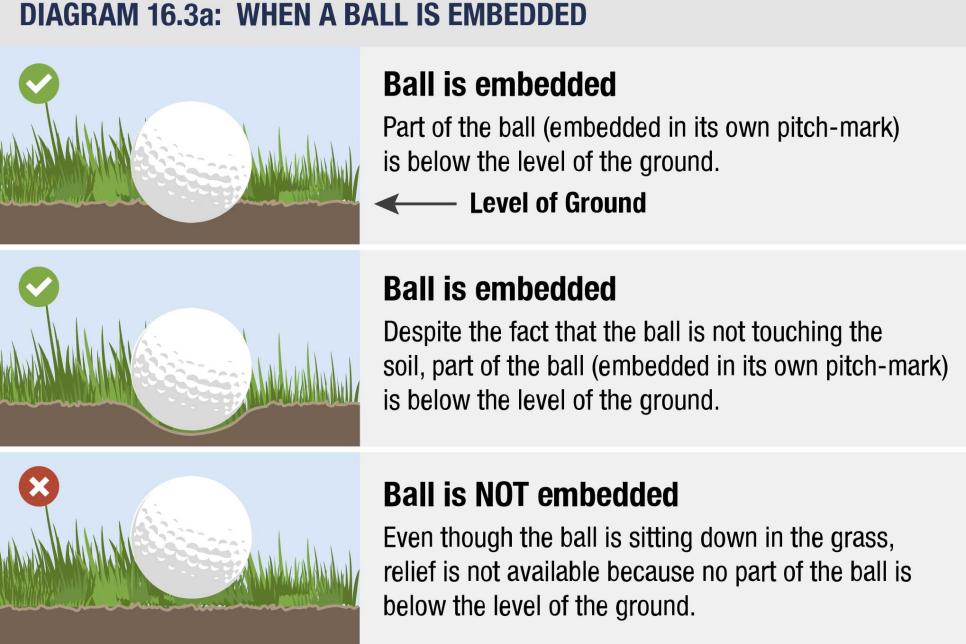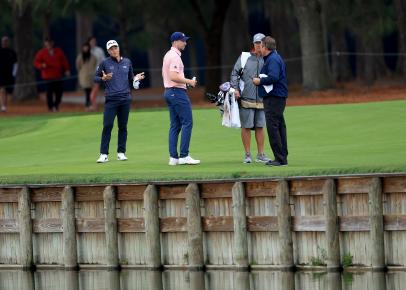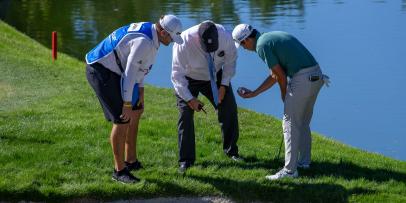Rules of Golf
Rules Review: What exactly is an embedded ball?

David Cannon
Pardon the pun, but when it comes to determining what is and isn't an embedded ball, the Rules of Golf has gone soft and mushy. What we mean is the applicable rule regarding such situations was revised a few years ago to make it more user friendly.
Before we get to the rules change, it's a good idea to do a refresher on what constitutes an embedded ball. The Rules of Golf state its whenever you hit a shot and your ball embeds in its own pitch mark. By definition, part of the ball has to be clearly below the level of the ground, though there can be grass or loose impediments between it and the turf. An example would be a ball that gets plugged on a fall day with a leaf tucked between it and the ground. If you’re ball is simply in deep grass but resting on the surface, tough luck. Also, the ball has to have been embedded because of the previous stroke, not by being stepped on or run over by a golf cart.
The key thing to remember here is that it has to be in your pitch mark, not one unrepaired by another golfer. At the 2022 Players Championship, Paul Casey got a miserable break when his tee shot on the 16th hole in the final round at TPC Sawgrass found disaster. Casey, two shots off the lead at the time, was upset with the situation, but the rules official let him know that video showed it was not Casey's pitch mark that the ball was in. What happens if you're not sure who made the mark? As long as it's reasonable to conclude from available information that it's your pitch mark, you can treat it as embedded.
Back to the rules change. It used to be that your ball had to be plugged in turf "through the green" that was cut to fairway height or lower. That meant, if your ball plugged in the rough, well, call for an unplayable lie or grab a shovel.
Now, thanks to the revision in 2019, Rule 16.3 allows for relief anywhere in the general area except when it plugs in sand higher than fairway height. The general area is defined as all of the course except for the teeing area and green of the hole you're on and any penalty area or bunker. Don't confuse the sand exception with a bunker. Two different things.

Graphic courtesy of the USGA
So what do you do if you are faced with an embedded ball? First, the rules allow you to mark and lift a ball to make certain it lies in a condition where relief is allowed. If it’s determined the ball isn’t embedded, you replace the ball on its original spot and play from there. If the ball does meet the objective conditions that define being embedded, a player can measure one club length, no nearer the hole, from the spot directly behind where the ball became embedded (so the pitch mark isn’t in the relief area) and take a free drop.
A couple more notes on embedded balls. If your ball plugs on your green, you can mark it, lift it, repair the pitch mark and replace the ball (you knew that, right?). Also, if you hit a grounder that never gets airborne but plugs, it's not considered embedded. You've got a heckuva story to tell, but you don't get free relief.


